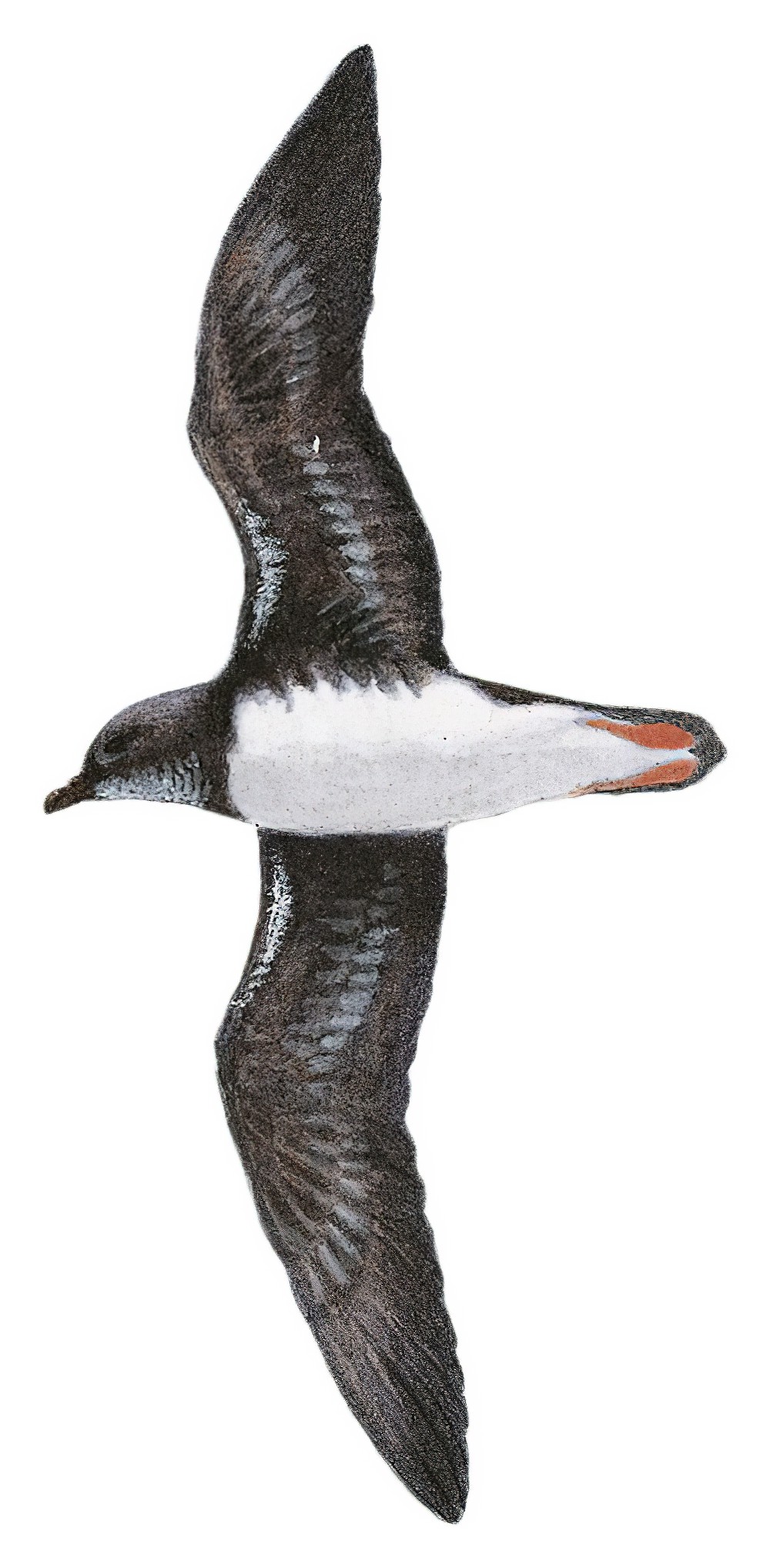Phoenix Petrel / Pterodroma alba

Phoenix Petrel
SCI Name:
Protonym: Procellaria alba Syst.Nat. 1 pt2 p.565
Taxonomy: Procellariiformes / Procellariidae / Pterodroma
Taxonomy Code: phopet1
Type Locality: Turtle and Christmas Islands; restricted to Christmas Island by Murphy, 1952, Amer. Mus. Novit., no. 1580, p. 32.
Author: Gmelin, JF
Publish Year: 1789
IUCN Status: Endangered
DEFINITIONS
PTERODROMA
(Procellariidae; Ϯ Great-winged Petrel P. macroptera) Gr. πτερον pteron wing; -δρομος -dromos -racer, -runner < τρεχω trekhō to run; the gadfly petrels were so named with reference to their fast weaving flight, as if pursued by horseflies; "1. FULMAREÆ. ... *4. Pterodroma, Bp. 14. fuliginosa, Banks. (grisea, Kuhl nec Gm. lugens? Soland. atlantica, Gould.) 15. macroptera, Smith. (brevirostris, Less.) 16. aterrima, Verr. (carbonaria? Solander.)" (Bonaparte 1856); "Pterodroma, Bp. (Thalassoica? p. Gr. - Procellaria, p. Hombr. et Jacq. - Ossifraga, p. Reich.) Rostrum brevissimum, curvum, valde compressum: cauda cuneata. Nigrae. Cum genere BULWERIA Procellariearum analogiam praebent. Parvulae inter congeneres conveniunt quippe statura cum gigantibus illis propriae sectionis. M. ant. pr. Afr. 3. 1. PROCELLARIA macroptera, Smith. ... 2. PROCELLARIA FULIGINOSA, Banks, nec Lath. ... *3. PROCELLARIA aterrima, Verr." (Bonaparte 1857); "Pterodroma Bonaparte, Comp. Rend. Acad. Sci. Paris, 42, 1856, p. 768. Type, by subsequent designation, Procellaria macroptera A. Smith (Coues, Proc. Acad. Nat. Sci. Phila., 1866, p. 137)." (Peters 1931, I, 60).
Var. Petrodroma, Pterodrome.
Synon. Aestrelata, Cookilaria, Hallstroma, Oestrelatella, Proaestrelata, Rhantistes.
alba
L. albus white, dead white (cf. candidus glittering white) (see also albus).
● "76. ARDEA. ... alba. 17. A. capite lævi, corpore albo, rostro rubro. Ardea tota alba, capite lævi. Fn. svec. 132. Ardea alba major. Will. orn. 205. t. 43. Raj. av. 99. n. 4. Habitat in Europa." (Linnaeus 1758) (Ardea).
● ex “Cacatua” of Brisson 1760, and “Kakatoës des Moluques” of d’Aubenton 1765-1781, pl. 263 (Cacatua).
● ex “White Sheathbill” of Latham 1785, and “Vaginalis” or “Chionis” of Forster 1788 (Chionis).
● ex “Fedoa canadensis, rostro recurvo” of Edwards 1750, and “Limosa candida” of Brisson 1760 (?syn Limosa haemastica).
● "99. MOTACILLA. ... alba. 12. M. pectore nigro, rectricibus duabus lateralibus dimidiato oblique albis. Motacilla pectore nigro. Fn. svec. 214. Motacilla. Gesn. av. 618. Aldr. orn. l. 17. c. 23. Bell. av. 88. 6. Will. orn. 171. t. 42. Raj. av. 75. n. 1. Alb. av. 1. p. 49. t. 49. Frisch. av. . t. 23. f. 4. Olin. av. 43. Habitat in Europa." (Linnaeus 1758) (Motacilla).
● ex “Spatule blanche de L’Île de Luçon” of Sonnerat 1776. “Mr Ogilvie Grant argues for the adoption of Scopoli’s name of P. alba, founded on Sonnerat’s plate. Although the bird is said to have come from Luzon, it is well-known that many of Sonnerat’s species were obtained in Africa, and set down in error as being from the Philippines. That this has been the case with the present species hardly admits of a doubt” (Sharpe 1898) (Platalea).
● ex “Guira Panga” or “Cotinga Blanc” of de Buffon 1770-1783 (Procnias).
● ex “White-breasted Petrel” of Latham 1785 (Pterodroma).
● ex “Mouette cendrée tachetée” (= ☼) of d’Aubenton 1765-1781, pl. 387 (syn. Rissa tridactyla).
● ex “Gobe-mouche blanc huppé du Cap de Bonne Espérance” of d’Aubenton 1765-1781, pl. 234, fig. 2 (syn. Terpsiphone paradisi).
● ex “Curiçaca” of Marcgrave 1648, and “Courlis à col blanc de Cayenne” of d’Aubenton 1765-1781, pl. 976 (syn. Theristicus caudatus).
● ex “Aluco minor” of Aldrovandus 1603, “Common Barn-Owl”, “White-Owl” or “Church-Owl” of Ray 1676, and “Common Barn-Owl” or “White Owl” of Albin 1731 (Tyto).
UPPERCASE: current genus
Uppercase first letter: generic synonym
● and ● See: generic homonyms
lowercase: species and subspecies
●: early names, variants, mispellings
‡: extinct
†: type species
Gr.: ancient Greek
L.: Latin
<: derived from
syn: synonym of
/: separates historical and modern geographic names
ex: based on
TL: type locality
OD: original diagnosis (genus) or original description (species)












